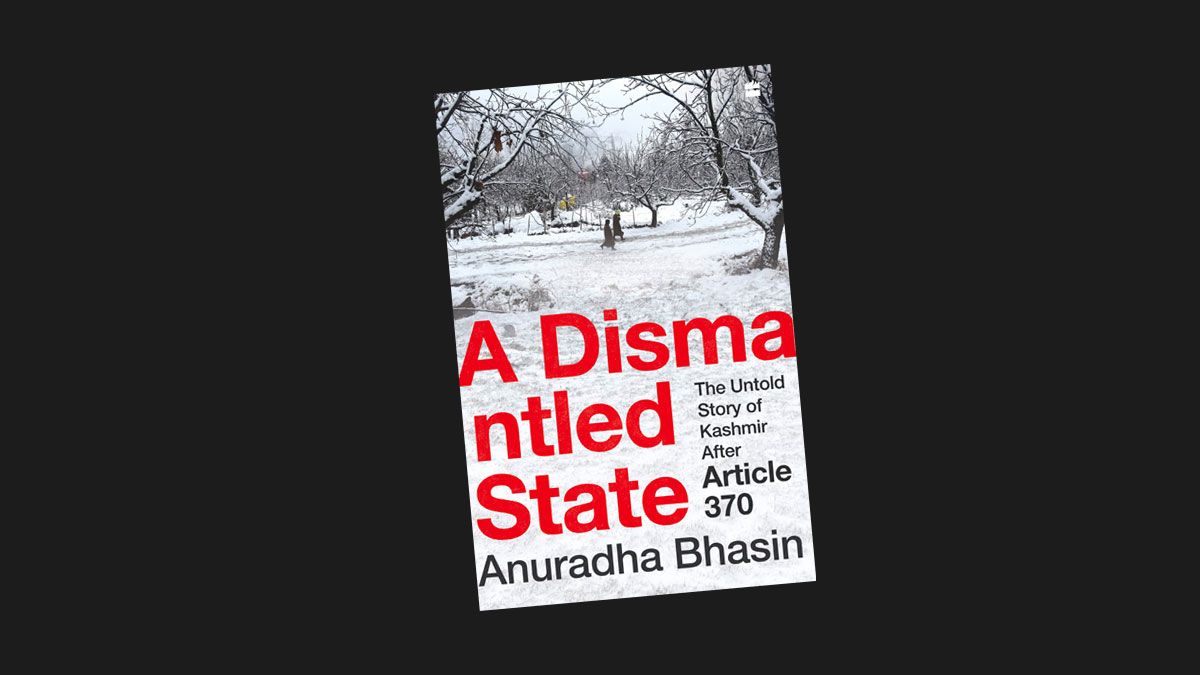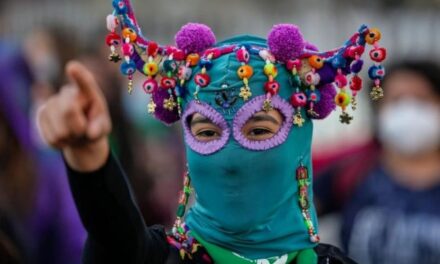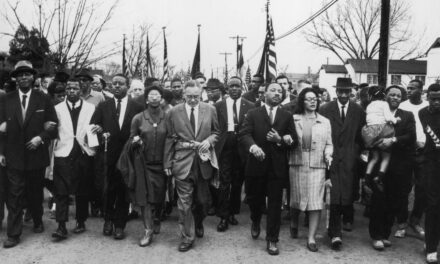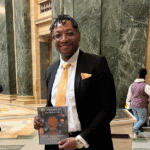On 05 August 2019, the parliament stripped Jammu and Kashmir of its special status by reading down Article 370 and 35A, thus dividing the erstwhile state into two union territories of Jammu, Kashmir and Ladakh. The abrogation of the already hollowed-out articles is believed to usher in a new dawn of democracy, peace, equality, and development and end suffering in Naya Kashmir. The Instrument of Accession (by which the former princely state of J&K acceded to India in 1947) was overturned. However, on the ground, far away from the din of celebrations amplified by mainstream corporate media, there was a sudden, sullen silence in Kashmir which journalist Anuradha Bhasin’s book, A Dismantled State: The Untold Story of Kashmir After Article 370 chronicles, deconstructs, and questions state propaganda surrounding Naya Kashmir.
The book published by Harper Collins last year is a ground-up view of the abrogation aftermath. It chronicles the ramifications of the abrogation of special status beyond national spectacle and questions the central government’s versions and narratives. The author gleans facts and listens to muted voices and whispers amidst loud sullen, imposed fear and silence.
In her book, Bhasin, a renowned journalist who is a John S. Knight Fellow at Stanford University, traverses that journey of transition in Kashmir that has left the people of the Muslim majority Kashmir in deep distress, dilemma, disempowered and dispossessed.
Pre August 5, 2019
According to the author, the decision impacted the fate of 13.6 million people and was ratified; she has delved into the preparations for this as Kashmir was turned into giant prison with people trapped inside like mice in mousetraps. Amidst deserted, silent streets handled by security forces, all forms of communication were brought down. There was a physical, psychological, economic, and political siege. Even though the home minister announced, “Not a drop of blood was shed,” and officials conflated people’s sullen silence with acquiescence, her book questions the means and methods that a democratic nation chooses to deliver the deed while blurring the boundaries of democracy and totalitarianism.
The author explores how the government prepared the ground over the years for its widespread acceptance and support through a slew of events and narratives. Operating from a political vacuum for more than a year, the death of a prominent journalist, the BJPDP coalition falling apart, the Pulwama attack, the panic induced by pre-August five rumours, official orders, and unprecedented developments, the author has created a sense of foreboding. She questions official assurances and ensuing deceptions through them. Regardless of ideologies and affiliations, the local politicians were kept in the dark and incarcerated en masse.
Post August 5, 2019
On the ground, the author explains how the ‘Naya Kashmir’ development vision of the BJP after reading Article 370 may sound good and promising but only from a distance. She questions mass silence and enthusiasm, the absence of which, according to her, is a telling comment about how locals view new laws and policies as there are fears of dispossession, disempowerment and ecological vandalism. Her anecdotes, interviews and gleaning of facts and reportage from the ground provide insight and help in understanding happenings beneath the state-manufactured narrative.
550 Days
Amidst the communication clampdown, the author narrates her journey to Supreme Court to revoke a banning order on communication clampdown, especially high-speed internet lasting more than 550 days. As the executive editor of Kashmir Times, the author narrates the history of communication shutdowns; she also analyses, through her decade-long career in journalism, the difference between blackouts and operating from information blackouts in Jammu and Kashmir. She questions the piecemeal restoration of internet services which were out of sync with guiding principles laid down by the Supreme Court. She chronicles the struggle people had in the absence of communication and questions the digital India narrative as Kashmir continued to be on the other side of the digital divide, the struggle transitioning from security lockdown to pandemic-driven lockdown.
In the absence of any form of communication and legal redress mechanisms, the author has tried to explore the role of democratic pillars in the restoration of basic civil and fundamental rights.
Imprisoned
As prisons were filled to the brim and uncertainty hovered, the author gave a peep into the struggle of people across ideologies, parties, and classes to reveal similarities between open-air prisons (Kashmir) and jails in different parts of the country. After months of detention, the prisoners were made to sign bonds, demanding “good behaviour” to get acquitted. However, she also chronicles, through a handful of cases, the commoner’s struggle to locate members amidst communication clampdown and access to jails which incurred financial exhaustion. The book delves through some anecdotes about the work of poor people who couldn’t acquit their relatives and how only privileged and prominent prisoners were released to salvage the international image and ward off the pressure. As there were minors under detention also, the book questions the arbitrary use of the Public Safety Act (PSA) and Unlawful Activities Prevention Act (UAPA), according to her used arbitrarily against people to shut dissent.
Psychological Trauma
The book’s author traces the severity of the norm of harassment, intimidation, detention, humiliation, raids, molestations and psychological traumatization. Through her collection of ground facts, she rebuffs the home minister’s claim that no bullet was fired. She explores how fear post-August five has been pervading and institutionalized as Kashmir became a prison of silence and subjugation.
Unlike Jammu, she examines the impossibility of protests in Kashmir and how Kashmiri people, through Foucault’s theory of the Panopticon, how life continues to be micromanaged by the state.
Quit Kashmir Movement
The author has tried to trace the history of Article 370 through her detailed interaction with Krishan Dev Sethi, a veteran campaigner of the Quit Kashmir movement against the autocracy of the Dogra king and the only surviving member of the J&K Constituent Assembly that had drafted the constitution of the state. In her interview, she details accession, legality, and special status.
Lockdowns
Kashmir seamlessly transitioned from one lockdown to another. As the new lockdown for Kashmir was global due to the pandemic outbreak, the nationwide Covid lockdown evoked sympathy in mainland India for Kashmiris; however, the book critiques the comparisons. Despite the nature of the nationwide lockdown after March 2020, the book has also chronicled and questioned the course of events and decisions as the pandemic was used as a pretext to enforce new laws and disallow any dissent.
In subsequent chapters, the author also questions the definition of normalcy and the nature of normalcy in Kashmir. She investigates the role of Delhi TV in amplifying the questionable narrative peddled by the government and giving a spin to suit its agendas. According to the author in her book, security threats and terrorism are convenient excuses that justify and normalize just about everything in Kashmir –curfews, arrests, detentions, militarized and deserted roads. Similarly, she questions the cherry-picked people and delegations visiting Kashmir to peddle and propagate the government narrative as they bury heads in the sand.
Role of Media
The author herself is a journalist who has been soul-searching how media had to die so that ‘normalcy’ could survive. L.K Advani’s famous retort to journalists after the emergency, “you were asked to bend, but you crawled,” rings true in the valley today, the author argues in her book.
She probes the role of local media’s compliance post abrogation and succumbing to official diktat without questioning. The book offers a glimpse into the history of media persecution from the beginning of the armed conflict and how it operated amidst multiple stakeholders. She has documented the media’s logistical impediments, the shrinking space to work freely, and the challenges of information gathering amidst the most significant communication blockade. The book also documents the arm-twisting methods used by the authorities to tame journalists from thrashing, detaining and criminalizing through laws and policies and its impact on the fourth pillar of democracy and conflates New Media Policy with “Orwellian Policy.”
Politics
The politics in Kashmir post-abrogation continued to be in a deep freeze. As political leaders were imprisoned and were made to sign bonds in return for freedom, she has cursorily traced the political journey of Kashmir from the plebiscite to the demand for statehood.
As new political offshoots sprang after abrogation and a new ground for politics was being prepared by BJP to make substantial inroads. The author in her book chronicles the events of how the BJP is trying to make inroads through gerrymandering by contentious delimitations to form new governments, the DDC elections it lost but wanted to tilt into its favour and fractures in PAGD, which it intends to use to its advantage.
She also examines the symbolic essence and the short journey of Shah Faesal, an IAS officer and New Delhi poster boy, from his entry into politics to his remark: “Stooge or Separatist” post abrogation Article 370. A reader is left thinking about which label Faesal carries as he has narrowed down his choices.
The book, however, has not traced the separatist voice and argues that its political sphere has irrevocably slipped into a black hole.
In its symbolic political outreach as the centre reached political parties and what it termed the ‘PAGD Gang,’ she questioned its hype and timing.
The author, in her book, argues how earlier, New Delhi viewed and retained Kashmir for some strategic and symbolic values, but now in the incumbent government, it has changed. She argues that the entire texture is being transformed through bulldozing economy, polity, society and demography to fulfil specific agendas that infuse demographic fears in the local Muslim population.
The book also traces and cursorily links the Chinese incursion and growing aggression into Ladakh after August 5 and maps some geo-political developments and ramifications. However, the author has given the context of armed insurgency in Kashmir. Even though it cursorily provides context, the book traces the contours of conflict even before the armed uprising of the 90s. It also maps the peace process, uprisings of street battles, and state responses to peaceful protests, especially after 2008. The book examines the trend of new militancy, especially after 2010, compares it with the 90s and draws differences. Besides this, she also chronicles people’s support, sympathy, loss post-2010 and the role of technology.
Post Pandemic
As new trends began to be dictated post-pandemic, she examines how the state has criminalized sympathy as people’ militants’ body bags were refused to families. The book uses government data to explore the uptick in militancy and violence spikes, especially after the abrogation. However, the book has cherry-picked the quotes from journalist Gowhar Geelani, Rage and Reason, to drive home points on how militants use locals as human shields. The author has not researched other contrary facts.
Land
The book chronicles and critically examines the new land laws and property rights introduced in Kashmir and how they disempower and dispossess people in the name of development and security. Termed as regressive and outdated by the government, the earlier laws ensured bridging social and economic disparities. The book also questions the ecological and economic fallouts of new laws introduced in Kashmir.
As tinkering with land laws has induced anxieties in locals, it has also deepened worries of demographic change after the Abrogation of Article 370. The author examines the skewed balance in bureaucracy tilted towards a particular ideology and religion and ensures multiple ways of disempowering and dispossessing Muslim locals.
The book critiques people who have not been integrated but are further alienated from the country and how silence and seething anger can erupt like a volcano. As India, according to the author, is shedding any pretence of a secular and democratic nation, she prognosticates in her book that the Indian government and deeds in Kashmiri may be replicated in India.
Book
The book, as it chronicles and examines the erstwhile state of Jammu and Kashmir, presents a scathing critique of BJP led Modi government. The author has reviewed local, national and international reportage to counter the narrative of government and fill the information vacuum through some anecdotes and interviews.
The book’s claim that whosoever wants to understand India’s democracy metamorphosing into authoritarianism is contestable, as shreds of democracy and dissent are still present in India. The book also criticizes Delhi-based media and their abdication of journalistic duties and becoming an extended arm of the government.
The author has researched and chronicled the reportage of events to build her argument. A Dismantled State provides insightful coverage and counter-narrative to Naya (New) Kashmir as peddled by the BJP after the abrogation of Article 370.
It must be read by those interested in knowing how democracy is a charade in Kashmir and tourism footfall and election turnout is not markers of normalcy. She also questions, though cautiously, the role of democratic institutions in Kashmir, especially the Supreme Court, as petitions challenging abrogation are yet to be heard.
As John Pilger, acclaimed journalist and human rights firebrand, said that official truths have powerful illusions; the book attempts to shatter those official illusions created for and after the abrogation of Article 370.
As the Hindu nationalist Bharatiya Janata Party (BJP)-the led government continues to use abusive and discriminatory policies to repress Muslims and other minorities in India, according to Human Rights Watch, Kashmir continues to be its laboratory.
On August 6, 2019, columnist Pratap Bhanu Mehta wrote, “BJP thinks it is going to Indianise Kashmir. Instead, we will see, potentially, the Kashmirisation of India.” Bhasin’s book is a prologue for that eventuality.
As each chapter of the book begins with a powerful quote, the one that encapsulates the whole book is Yevgeny Yevtushenko’s words: “the truth is replaced by silence, the silence is a lie.”














